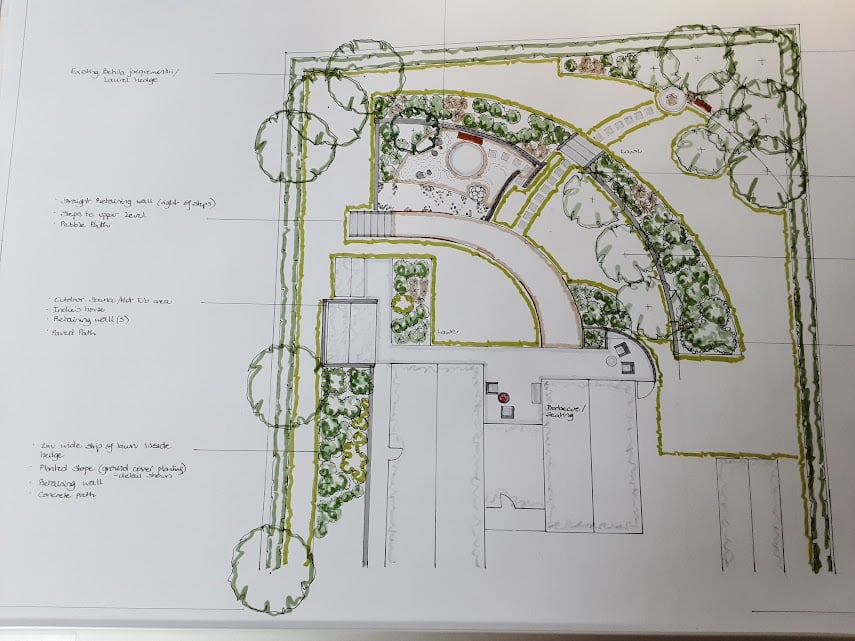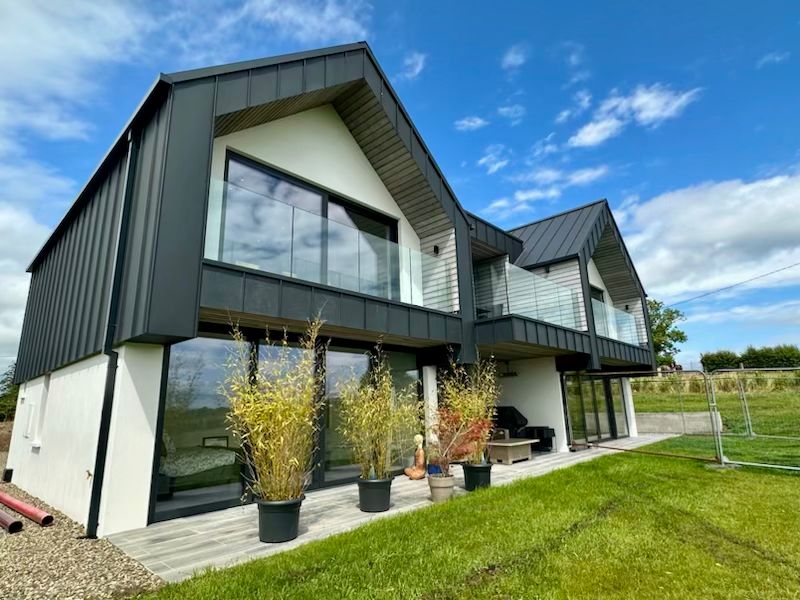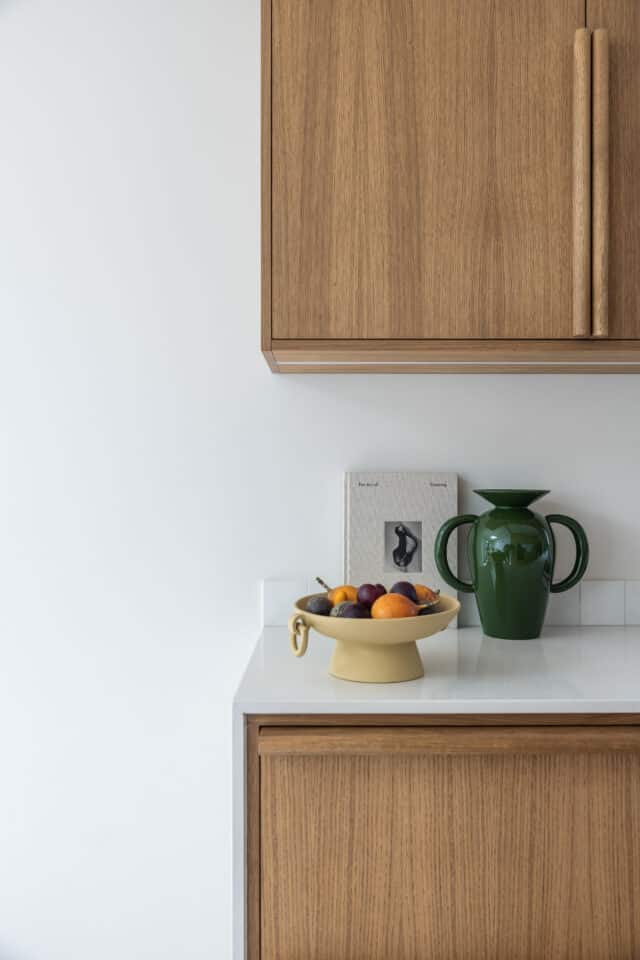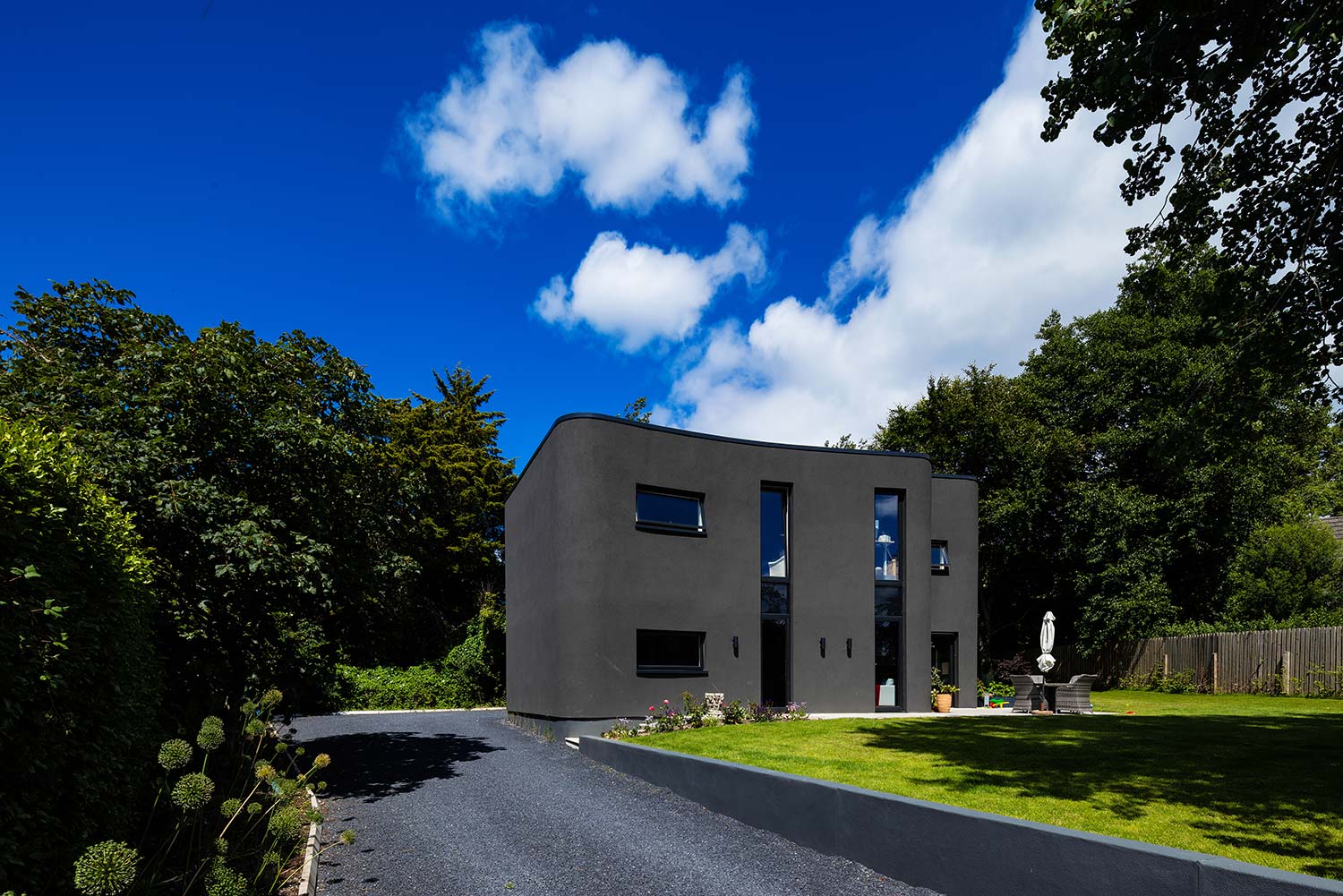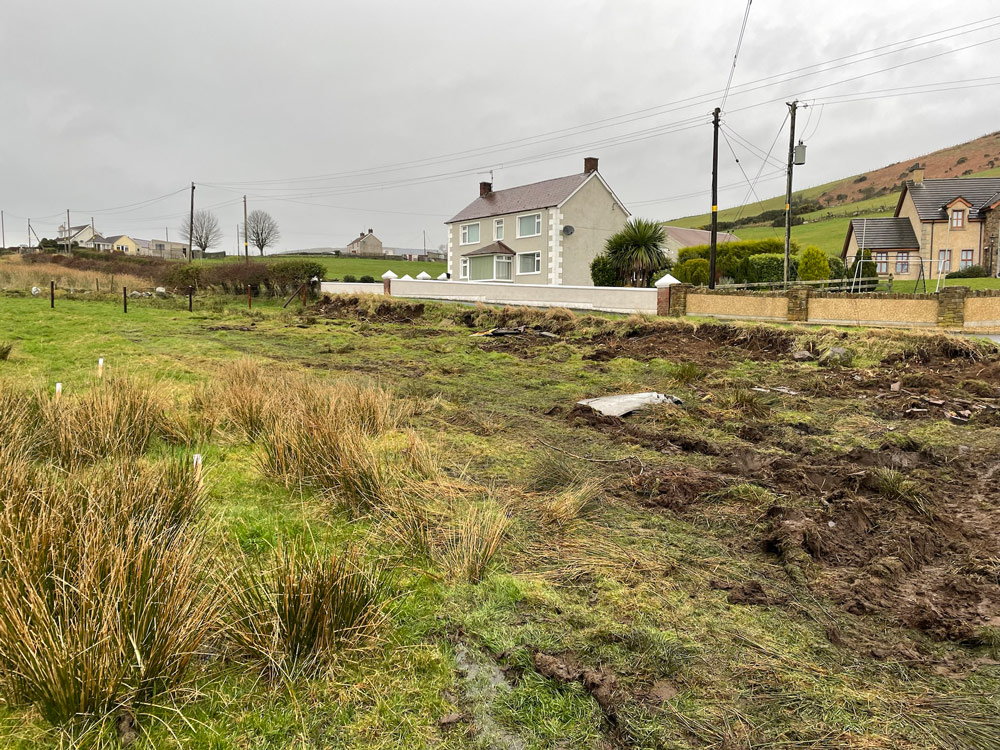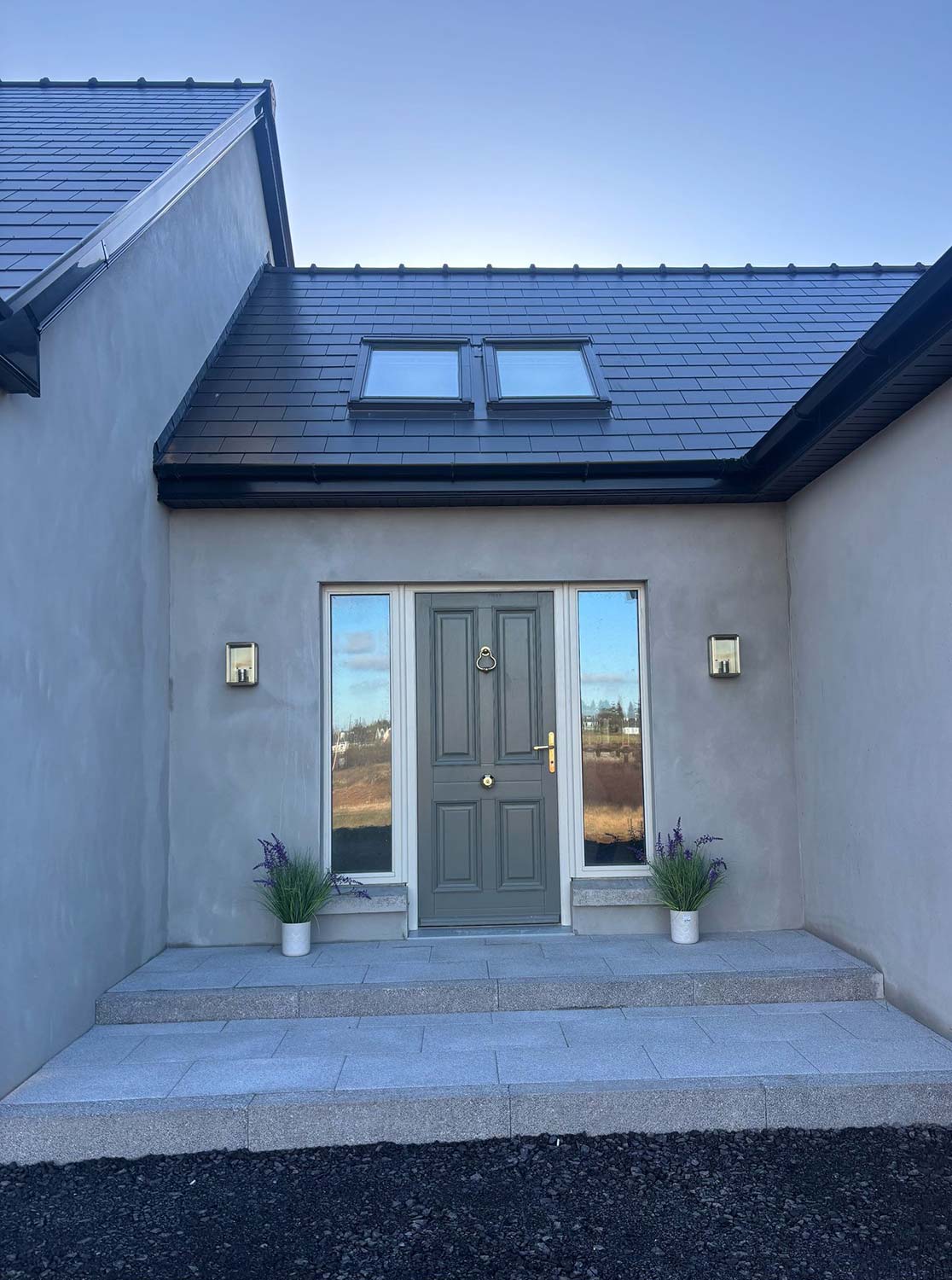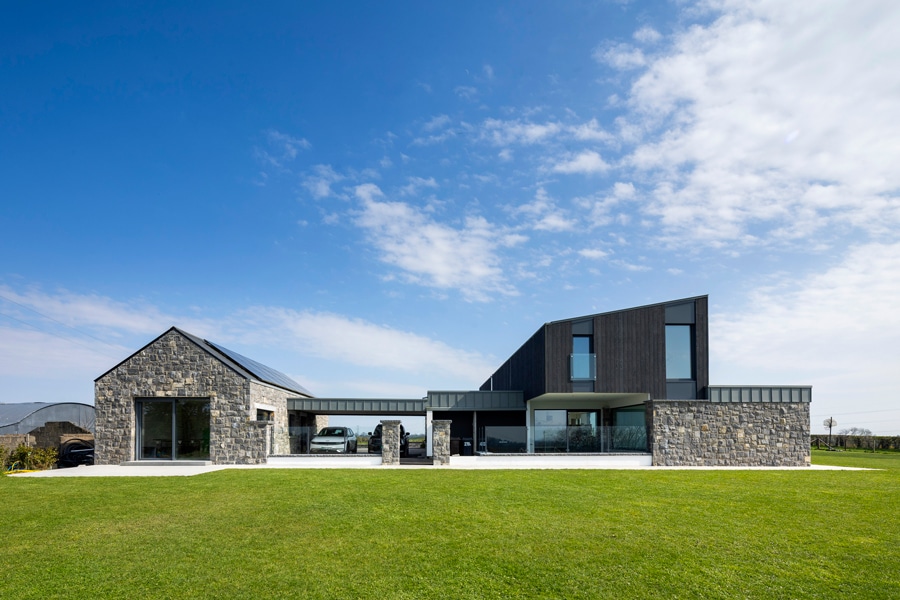In this article we cover:
- How the house connects to the outside
- How to maximise views and provide shelter
- Screening from the wind and for privacy
- Integrating upper and ground levels
- Robust plan choices
- Top 3 garden design tips
- Garden plans and inspiration photos
This project was for a beautiful and unusual home in a spectacular but challenging location – a Co lare hillside with panoramic views over the Shannon estuary. Combining their experience of living in a northern climate with a real appreciation of the outdoors, my clients’ new home is inspired by candinavian living and designed to suit their busy lifestyles perfectly.
The living space is on the upper floor to maximise the wonderful views over the river estuary, with the bedrooms below. The garden needed to look well when viewed from above, both indoors and from the outdoor seating area on the upper level, and be aligned well with the interior so that it feels like another room in the house.
Having spent some years living in Sweden, the owners were keen to extend some elements of Scandinavian living to the garden and an outdoor sauna and hot tub were high on the list. These needed to be easily accessible from the house in winter without obscuring other garden views or planting.
Windy location
In the west of Ireland, spectacular views often come with strong southwesterly winds at any time of year, so shelter was needed to make this garden comfortable for humans and plants alike – not forgetting a very beloved labrador who needs lots of lawn for playing on.
A comfortable seating area was needed close to the master suite on the ground floor, to make spending time outside surrounded by nature easy and accessible. This was screened from shelter screen of timber uprights 1.8m high.
Narrow gaps in between each angled plank make the screen semi-permeable, so as well as an attractive backdrop to the seating area it helps to slow the wind and make the space feel comfortable.
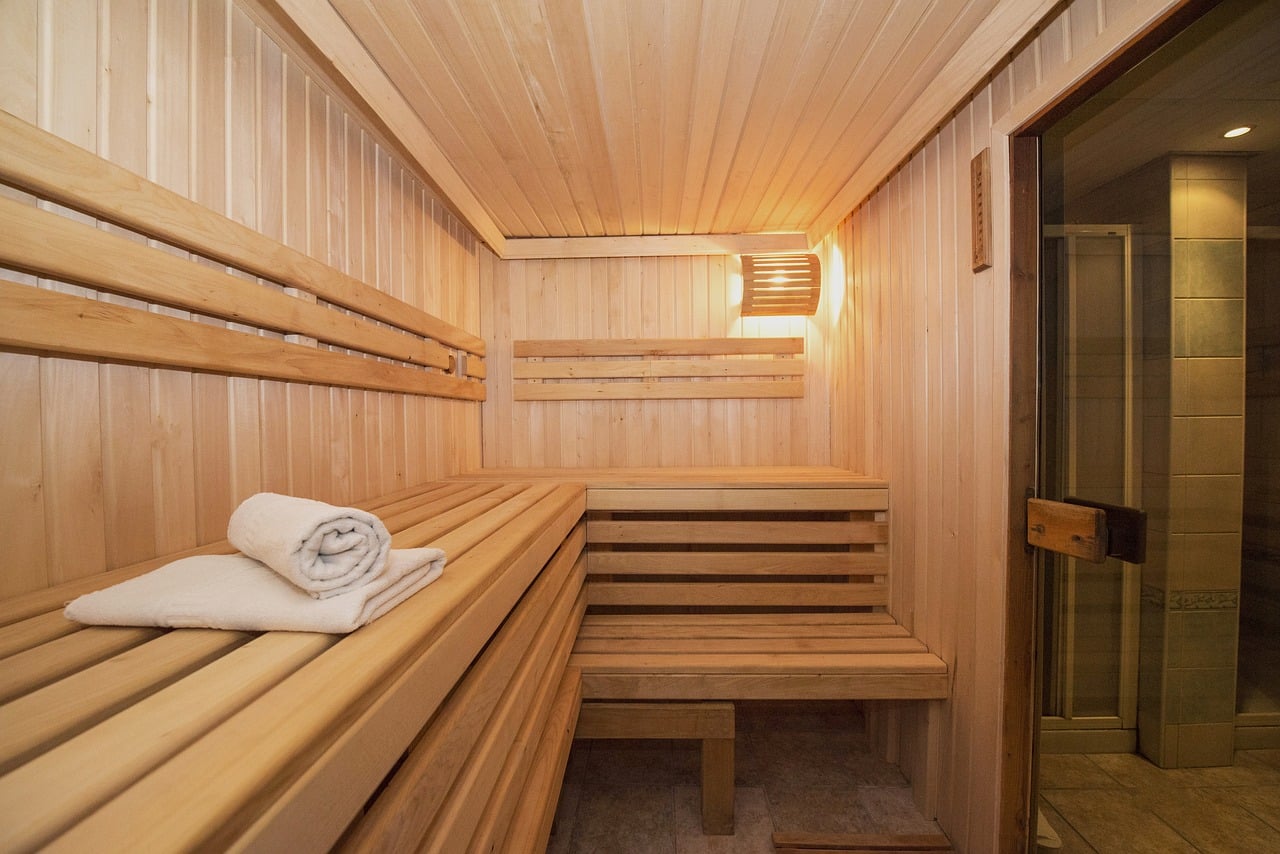
Integrating upper and ground levels
Pretty planting, raised and ground level, and a curve of trees just beyond the screen echo the shape of a curved path leading to the higher part of the garden.
Wide swathes of sturdy plants form a larger curve across the garden, with a stepping stone path linking the lower and higher areas via a set of wide paved steps and curved retaining wall. In this way the ground itself is used to divide the space and help with creating sheltered areas on the lower level.
Just inside the retaining wall and tucked inside a second curved screen, a meditation garden offers a sheltered, quiet space to rest and reflect. Japanese zen garden influences (raked gravel, cloud pruned evergreens and carefully placed rocks) provide visually soothing texture and a sense of calm.
On the upper level, which is more exposed, native birch and rowan trees underplanted with ground cover add some height, with a sculpture acting as a focal point from above as well as below.
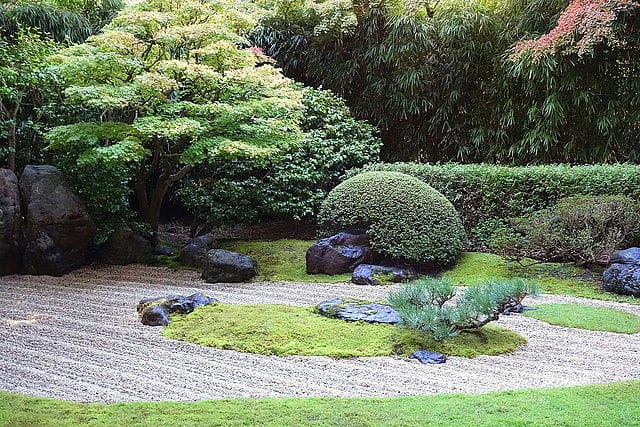
Robust plant choices
Robust plants such as Sambucus ‘Black Lace’, Choisya ‘Aztec Pearl’ and Buddleia ‘Nanho Blue’ should reach a reasonable size relatively quickly even on a windy site, and offer attractive foliage, flower and colour.
Evergreen grasses, Anemanthele and Carex, will provide shape while standing up to the worst the winds can throw at them. In the more sheltered spots, long flowering, reliable perennials including the hardy Geranium ‘Rozanne’, Anthemis and Nepeta help to bring the space alive without too much looking after – perfect for people with busy schedules – and leaving extra time to enjoy that lovely sauna.
Elsewhere in the garden, native wildflower meadow and lawn areas are combined, with plenty of grass for an energetic labrador to gallop across.
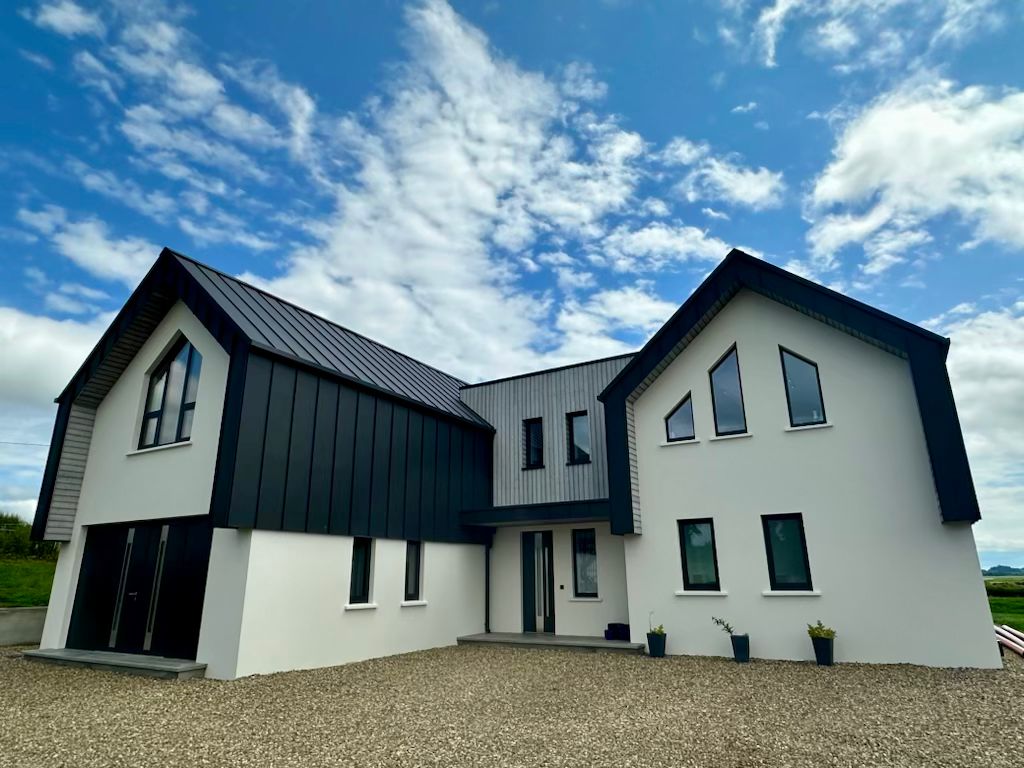
Top tips for a windy garden
Consider views from above. Ensuring the garden layout looks good when viewed from an upper level enhances any external views as well as giving the eye interesting features to rest upon.
Be careful with curves. Paths, walls, borders and trees can all be used to create curves, but make sure they make sense in terms of how the space is laid out – curving features just for the sake of it can be visually jarring.
How to gather inspo. By all means be inspired by influences that meaningful to you, but make sure you only use plants that will thrive in your particular conditions. And add shelter if needed.
